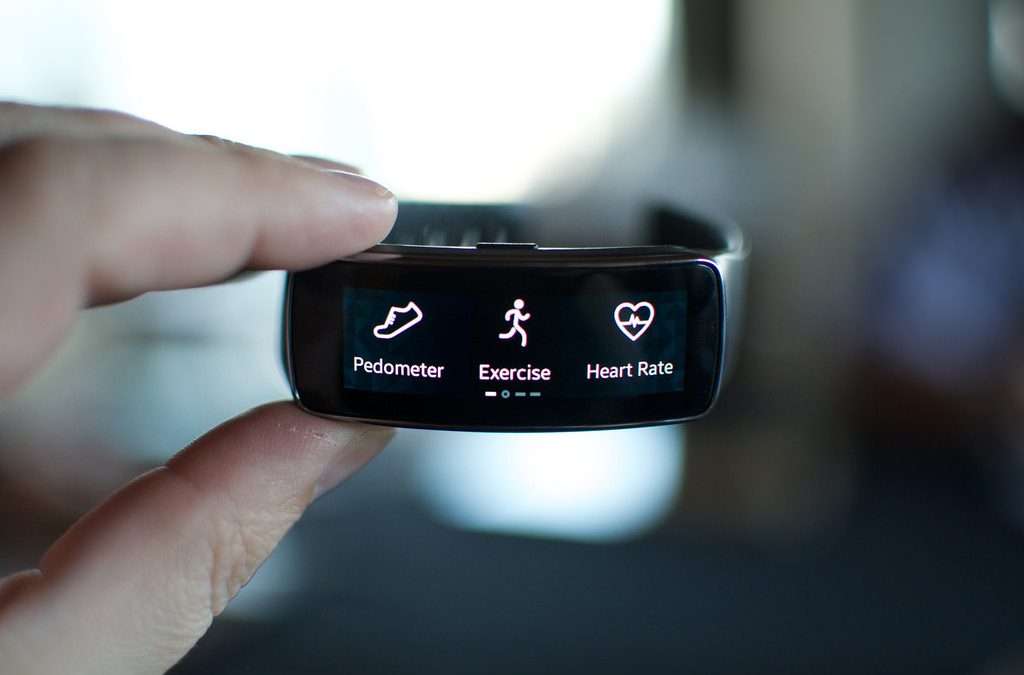This post is sponsored by Samsung Business. All thoughts and opinions are my own.
Wearables offer companies an opportunity to improve productivity—if used correctly. According to a recent UK study, reported in The Telegraph, Goldsmiths, University of London analyzed the impact of wearable technologies in the workplace on employee well-being, productivity, and job satisfaction. They found that worker productivity increased by 8.5 per cent, while job satisfaction levels rose by 3.5 per cent.
Dr. Chris Brauer, lead researcher of the project, said: “These results show the potential power and application of wearable devices in the workplace from employee biometric CVs to organizational real-time executive dashboards for resource allocation. Wearable technologies are arguably the biggest trend since tablet computing, so it’s natural that employees and businesses will look to use these devices in the workplace. Using data generated from the devices, organizations can learn how human behaviors impact productivity, performance, well-being, and job satisfaction. Employees can demand work environments and hours be optimized to maximize their productivity and health and well-being.”
To find that 10 percent increase in productivity, however, you can’t use every device you own in a similar way. They’re not all backups for your numerous alerts, but efficiency promoting devices created specifically to help wearers gain a unique advantage over carrying around a phone can improve productivity.
What Types of Wearables Can Improve Productivity?
I’ve found almost any wearable can improve productivity and focus if used correctly. Instead of using your smartwatch only as an extension of your phone, for instance, you can schedule subtle alerts and reminders to send you reminders during meetings, at the gym, or anywhere else you don’t want to carry your phone. Keep your top priorities as alerts on your wearables, and use the smartphone as a backup. The trick is finding the value-add of a device and then weighing the benefits against current employee struggles.
It’s not news that people who are unhealthy become a cost drain on an organization. Unhealthy workers take more time off, tend to produce less, and find less satisfaction in their work.
Instead of firing every employee who fails to exhibit exceptional health and personal habits—obviously, an unsustainable strategy—companies can enhance productivity by encouraging the use of wearable devices in the workplace. The range of devices and the potential for their growth and benefits in the coming years is truly amazing:
- Smart bracelets/bands do everything from measure your physical activity during the day to recognize and notify you during times of extreme stress. A stress identification device, for example, has extraordinary potential for helping employees address anxiety before the point of a burnout. Many companies, including Jawbone, have started incorporating several functions into one wrist wearable so users don’t have to wear multiple monitoring devices to gain the full benefits.
- Posture monitors give wearers a signal when their shoulders start to droop and their spines start to curl. Over time, bad posture while sitting at a desk in front of a computer screen all day can leave people with chronic pain. With so many screen-based jobs, companies should invest in posture improvement. Good posture also improves overall blood flow, which enhances focus and mental activity. More alert employees translates to increased productivity.
- Brain activity monitors help employees act on certain mental cues, naturally driving work performance at a heightened level. However, something as personal as a brain wave monitoring device may only work well in specific business settings. Keep an eye on these types of products as the implications for the technology start to appear. Reality augmentation devices, such as the HoloLens from Microsoft (which hasn’t been released yet), promise to integrate the real and digital world in ways we’ve never had access to on a large scale. Instead of looking at a design on the computer and trying to envision it, these devices will allow companies to create three-dimensional designs wearers can try out in real space, in real time, before sending a product into production.
- Smart glasses, such as Google Glass, allow field workers to record and use data in a more intuitive way than ever before. Some even help health care professionals provide better and less invasive service to patients.
Many of these devices have the potential to truly change the game, no matter the industry. As companies start to realize the impact employee satisfaction and health has on productivity and the bottom line, they’re starting to promote and invest in resources that help employees stay healthier and happier, and do their jobs better than ever.
The Best Is Yet to Come
As more wearable technology starts to flood the marketplace and become a standard in the business world, I think researchers and scientists will start to see the true implications of using wearable devices in the workplace. In addition to facilitating workflow, I imagine wearables will represent opportunities in the market for enterprise level security, data storage for some wearable tech information, and understanding the boundaries between what a company can and can’t influence.
Additional Resources on this Topic:
NIH Seeks Your Input: Data Collection Best Practices for Devices and Wearables
Wearable Technology Creeps Into the Workplace
A Smart Employee for a Productive Work Place
Mobility Takes Corporate Wellness Programs from Perk to Pertinent [INFOGRAPHIC]
Wearable Health Technology Promotes Family Engagement and Wellness
For more content like this, follow Samsung Business on Insights, Twitter, LinkedIn, YouTube and SlideShare.
photo credit: Samsung Gear Fit via photopin (license)
